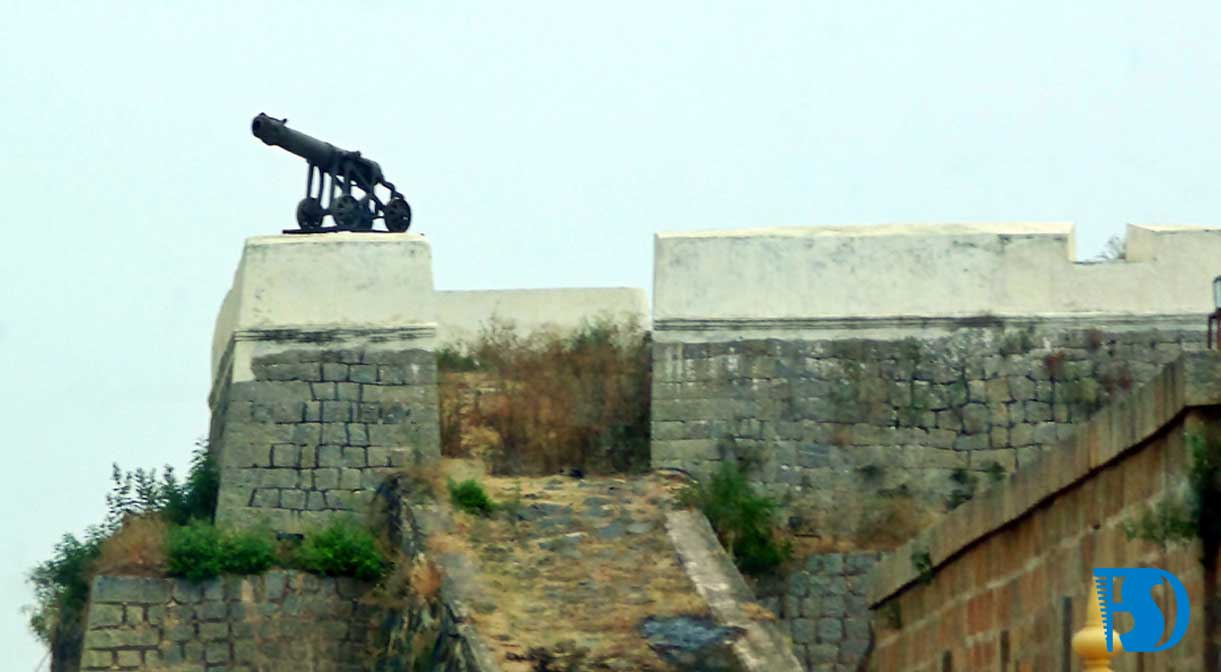
Srirangapatna Fort is a historic fort, which has been built in the historic capital city of Srirangapatna, Karnataka State of South India. It was built in 1454 by the protagonist of Timbuktu, during the reign of Tipu Sultan, all of this fort was recognized.
This fort is completely built in the shape of the fortress and it is decorated on the basis of French architecture. The Kaveri river also flows from one side of the fort. The Kaveri river has kept the fort protected from the western and northern sides.
In 1799, when British got their right to this fort, then there was the palace of Lal Mahal and Tipu Sultan in this fort. This fort has 7 shops and 2 dungeons.
Srirangapatna Fort History
This fort was constructed by Nayak of Tammans, ruler of Vijayanagar empire, in 1454 CE. By 1495, this fort was in the hands of the king, but after this Wadiyar captured the ruler of Vijayanagara.
The ruler of this fort changed with time, first the Nawab of Akrot ruled, and then this fort went to the hands of Peshwa and Maratha.
After capturing the fort, Wadiyar shifted his capital Mysore to Srirangapatna and made the fort the throne of his kingdom.
There were many progressive changes during the reign of Chika Debraj Wadiyar from 1673 to 1704, but the remaining three rulers did not have much effect on this fort.
After this, during the reign of Krishnaraja Wadiyar (1734-66), the king built a strong army in the fort and made Hyder Ali the chief of the army.
It is said that in 1757 Haider Ali had entrusted this fort to Maratha in 32 lakh rupees, but again he returned from Zoro to get it. In 1782, Tipu Sultan, the son of Hyder Ali, captured the fort and built a fort on the fort.
The British attacked this fort of Tipu Sultan. But Tipu had settled with the French and he also sent a letter to Napoleon. But after unsuccessful attempts, the British army under Colonel Wellesley invaded the temple of Tipu Sultan secretly on 4 May 1799. At that time there were 2494 British soldiers and 1882 Indian soldiers in the British Army.
When the janitor went to rest in the afternoon, the army started to cross the river secretly. In this battle Tipu Sultan was killed and the British compromised with the queen of Wadiyar. It is said that this battle started the expansion of East India Company in India.
The fort has been preserved by river Kaveri in the west and north direction. The Fort also has the Lal Mahal and the Temple of Tipu which was destroyed by the British in 1799.
There are 7 shops and 2 dungeons in the palace. It is said that Ramanuj was built by the Ramanuja, built inside the fort, which was a supporter of Vaishnavisma philosophy, and he constructed it by taking money from Samudra by the Hoysala king of the 12th Century.
This temple is one of the few selected Hindu temples, whose towers were not dropped by Tipu Sultan.
In the western part of the fort there is also an open garden near the temple. There are houses and dungeons in the northern part of the fort, it is said that European prisoners were kept in these dungeons.
The palace of Tipu Sultan is also contrary to the main entrance to Ranganath Swamy Temple. There is also Jama Masjid built on the basis of Indo-Islamic architecture by Tipu Sultan within the fort.
Tippu Sultan's sword and ring are still kept in the British Museum and it is said that his sword was used by Arthur Henry Cole.
 Dear Reader, My name is Manisha Dubey Jha. I have been blogging for 3 years and through the Fast Read.in I have been giving important educational content as far as possible to the reader. Hope you like everyone, please share your classmate too. As a literature person, I am very passionate about reading and participating in my thoughts on paper. So what is better than adopting writing as a profession? With over three years of experience in the given area, I am making an online reputation for my clients. If any mistakes or wrong in the article, please suggest us @ [email protected]
Dear Reader, My name is Manisha Dubey Jha. I have been blogging for 3 years and through the Fast Read.in I have been giving important educational content as far as possible to the reader. Hope you like everyone, please share your classmate too. As a literature person, I am very passionate about reading and participating in my thoughts on paper. So what is better than adopting writing as a profession? With over three years of experience in the given area, I am making an online reputation for my clients. If any mistakes or wrong in the article, please suggest us @ [email protected]
Read More.
